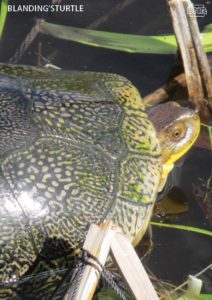CLICK HERE for the latest market quotes from the Iowa Agribusiness Network!
CLICK HERE for the latest market quotes from the Brownfield Ag News Network!
CLICK HERE for the latest market quotes from the Iowa Agribusiness Network!
CLICK HERE for the latest market quotes from the Brownfield Ag News Network!
(Radio Iowa) – Backers of a proposed beef processing plant near Council Bluffs are holding investor meetings in Iowa and around the region. Cattlemen’s Heritage is planning to construct a 450-million-dollar plant that would slaughter about 15-hundred head of cattle per day. Frank Maher, with Jennings Kallen Advisors, says they’ll be taking in cattle from across a wide area. “The cattle is coming from a 180-mile radius of Council Bluffs,” Maher says, “so that includes southeast South Dakota, north Missouri, and then as far west as Grand Island (Nebraska) and as far east as Fort Dodge.”
Maher says it’s a chance for livestock producers in the region to invest in themselves and get a fair return. “It’s an opportunity for the producers to get back control,” Maher says. “We’re in a marketplace where packer pricing is increasing and the amount of money that the producers are getting is falling and that’s been happening since the beginning of 2014 and there’s no end in sight because the packers are getting more and the producers are getting less.”
Cattle producers are being asked for a minimum investment of 100-thousand dollars which would get them priority for shackle space at the plant. Maher says they want to make physical progress soon at the site near the Mills/Pottawattamie county line. “The timeline is, we’re looking at putting the first shovels in the ground in May of 2022 and wrapping it up in December 2023,” he says.
The plant will employ about 750 people in a single shift and will offer onsite childcare and health services. Nearby subsidized housing will also be an option. Cattlemen’s Heritage officials claim the plant will have a $1.1 billion annual impact on the state of Iowa with the goal of not being bought up by one of the nation’s four major meatpackers.
(Radio Iowa) – Drought conditions are expected to expand across the region in 2022 and with — on average — mostly mild temperatures this winter, there is concern of another year ahead like 2012. That was a year of drought and extreme summer heat. Meteorologist Dennis Todey, director of the U-S-D-A’s Midwest Climate Hub in Ames, says there are similarities. “We are coming off La Ninas in two consecutive years. We did the same thing back in 2012. So, there’s that similarity,” Todey says. “There are other sea surface temperature differences that we note.”
Farmers shouldn’t start to worry too much, Todey says, as there are some contrasts as well between this year and a decade ago. “We had a very dry fall throughout parts of the Plains back in 2011 going into 2012, not quite as much in this time frame,” Todey says. “2012 really cranked up quickly by getting very warm and dry in the spring and right now we’re not necessarily seeing that same kind of crank-up yet.”
The Climate Prediction Center is forecasting above-normal temperatures and below-normal precipitation for the Northern Plains into early summer.
(Radio Iowa) – The isolation of the pandemic torpedoed many types of gatherings and clubs, but F-F-A is bucking the trend. The organization dedicated to first-hand learning about the world of agriculture is seeing membership rise in Iowa. Scott Johnson, executive director of the Iowa F-F-A Association, says Iowa was recently recognized as one of only six states that saw member numbers go up during 2021. Johnson says, “I’ve extended compliments to our past state officers over the past couple of years, and others, for doing what they can to keep FFA and ag education and those opportunities relevant to students and keeping them connected to what we think is a valuable experience for them.”
He says F-F-A’s leaders in Iowa are striving to bring visibility to the program and to recruit new students to the ranks. “I think that’s paid off,” Johnson says. “This year, we’re trending towards a 10% increase in growth over last year, and like I said, last year wasn’t a decline in membership either, so to be on that track of growth of membership and growth of programs across the state is tremendous.”
There’s been keen interest in F-F-A since it was founded in 1928 and Johnson says it’s not just a big deal in rural schools. “Des Moines has had a program for years,” Johnson says. “Sioux City recently started a program. Ames has been on board with us now for a few years. Cedar Rapids Prairie is another newer program that would be from one of those larger school systems that are out there.”
This is F-F-A Week. There are more than 17-thousand members in 252 Iowa chapters.
(Lewis, Iowa) – The Iowa Beef Center and Iowa State University Extension and Outreach will be hosting a “Beef Feedlot Marketing and Economics” meeting on Wednesday, March 2. The meeting will be held at the Wallace Learning Center on the ISU Armstrong Research Farm located at 53020 Hitchcock Ave, Lewis.
Presentations from Dr. Lee Schulz, ISU Extension livestock economist, Tim Christensen, ISU Extension farm management specialist, and Dr. Dan Loy, director of the Iowa Beef Center, will feature timely topics impacting the beef industry. Schulz will discuss market outlook and risk management, beef pricing from the producer to the consumer, competitive and transparent market proposals, and new USDA price reports. Christensen will address options for managing risk in the cattle industry, and Loy will review Iowa feedlot performance and benchmarking data.
The meeting will begin at 1:30 PM and conclude at 4:00 PM and is free to attend. Pre-registrations are requested by contacting the Cass County Extension Office at 712-243-1132 or the East Pottawattamie County Extension Office at 712-482-6449. For more information, including details on other “Beef Feedlot Marketing and Economics” sessions planned across the state, please visit www.iowabeefcenter.org or email Dan Loy at dloy@iastate.edu.
Information about the program is also available on the Cass County Extension website at www.extension.iastate.edu/cass or by stopping into the Extension office at 805 West 10th Street in Atlantic.
(Radio Iowa) – The only oak species that are native in all of Iowa’s 99 counties is facing some disease issues. The D-N-R’s Tivon Feeley, says they are seeing a lot of Bur Oak Blight. “And that is a fungus that is on the leaf. And it tends to overwinter on the bud scales where the leaf will come out the nest year and infects the tree next spring,” according to Feeley. “The numbers of Bur Oak Blight have been kind of fluctuating. We’ve seen it high, the last couple of years it has been low. But once you have it — if you don’t treat the treat it — the tree will eventually decline. And those numbers are now showing up in our forest inventory data.” He says it’s a concern from two aspects.
“You’ve got the landscaper, you know the person who owns the property that wants the beauty of these big bur oak trees out there. And then you’ve got it from the forestry perspective/. If you are out in western Iowa in the Loess Hills, it’s one of the drought-tolerant oaks that you can grow — and if you want you can harvest,” he says. While there is a treatment — he says it is not the best for a large scale.
He says it is an injectible fungicide that you inject in the spring. “The problem with bur oak blight is it is so common that the treatments are only affordable and can work in small capacities like one or two yard trees. It’s not something you can use to treat a forest worth of bur oaks,” Feeley says. He says if you suspect you have a tree is suffering from Bur Oak Blight, get the problem correctly diagnosed before any management decisions are made. You can send samples to the Iowa State University Plant Diagnostic Clinic for testing.
Chris Parks and Cass/Adair County Conservation Officer Grant Gelly talk the great outdoors. This week they discuss upcoming listening sessions, late season ice fishing, eagle numbers, and great backyard bird count.
Podcast: Play in new window | Download (38.9MB)
Subscribe: RSS
(Radio Iowa) – The Iowa Department of Natural Resources is joining with Iowa State University on a project to document and help a specific type of turtle increase its numbers. The D-N-R’s Karen Kinkead says the Blanding’s turtles don’t mature and reproduce at a very fast rate. “The average is about 14 years — but it varies individually by turtle before they lay their first eggs. And the nests are very susceptible to predators — particularly raccoons and skunks,” Kinkead says. She says there’s been less trapping in the state and that has led to increased predators for the turtle. The Blanding’s turtles are found in wetland areas of northwest and central Iowa. “They are a state-listed species, so we don’t give out specific locations,” according to Kinkead. “They’ve got a bit of a black market following, so we try to keep that private so that the turtles aren’t collected illegally.”

Blanding’s turtle (IA DNR photo)
The plan is to monitor the turtles with radio transmitters. “The University of Northern Iowa has been doing some work on a different species of turtles for a very long time — and so they’ve sort of figured out the methodology of which transmitters to use and how to set them and how to attach them to turtles. And it should work the same way on the Blandings turtles that we are interested in,” she says. They also plan to work with the Blank Park Zoo in Des Moines to gather some eggs and hatch out turtles to be placed back in the wild. “We think that doing it that way a turtle in captivity will be about the size of a three-year-old turtle in the wild after about a year,” Kinkead says. “And just that just gives them a bit more protection and gives their shell will harden and they get to a larger size — so it’s harder for like a great blue heron to swallow them whole for example.”
The Blanding’s turtles can live to be 75 years old. She says it’s important the D-N-R’s Wildlife Diversity Program does what it can to help this species. “They’ve certainly been around a very, very long time and I don’t think it is responsible of us to let them go extinct on our watch if we can help it,” Kinkead says.
The D-N-R is providing 163-thousand dollars for the project, with I-S-U chipping in 57-thousand. They have a two-and-a-half-year agreement to track and detail the lives of the turtles.
(Radio Iowa) – What’s billed as the Midwest’s largest and most colorful winter kite festival is scheduled for Saturday in north-central Iowa. Libby Hohn, tourism director for the Clear Lake Chamber of Commerce, says the Color The Wind Kite Festival is an exhibition of hundreds of traditional and inflatable kites, and even stunt kites doing aerial choreography to music. “We’re expecting great crowds and beautiful kites,” Hohn says. “We have dozens of kiters from all over the United States and even a kiter coming over from England to show off their kites.”
The 36-hundred acre lake is an ideal venue for kiting, she says, as there are no obstacles like trees or power lines. Ten-thousand spectators are expected for the one-day festival which will go on whatever the weather — as long as there’s wind. “Several years ago, there was very low wind and they would just attach kites to some ATVs and drive them around to try and pick up some wind,” Hohn says. “The way our topography is here in Clear Lake, there’s typically a nice breeze or wind so that’s also what makes us a great sailing lake in the summertime.”

Color the Wind Kite Festival (File photo, Clearlakeiowa.com)
At last check, the ice was 19-inches thick, so it’ll be safe to walk right onto the frozen lake to take in the spectacle in the skies. “We really recommend to dress for the weather. If you want to wear ice cleats on your boots, if you’re going to venture out on the ice, that helps with stability,” Hohn says. “If you’re bringing children, we recommend bringing a wagon or even a sled to pull them around on the ice.”
She notes, only kiters can park on the ice, though there’s free parking at Clear Lake High School and free shuttles. The event runs Saturday from 11 AM to 4 PM.
(Radio Iowa) – Iowa’s largest manufacturing employer is reporting a drop in income but a rise in sales. John Deere is reporting first quarter net income of 903-million dollars. That’s down more than 321-million from the first quarter a year ago. Worldwide net sales and revenues for Quad Cities-based Deere rose five-percent in the quarter to more than nine-and-a half billion, up from about eight-billion last year. 
Deere chairman and C-E-O John May calls the performance “impressive” given last fall’s U-A-W strike as well as “persistent challenges posed by the supply chain and pandemic.”